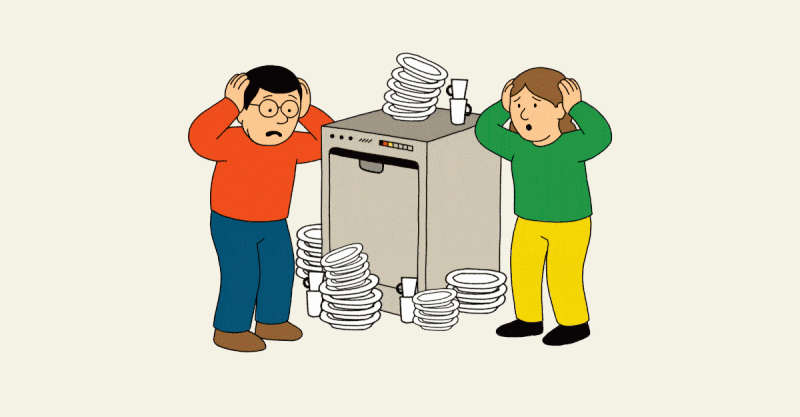
When the couples therapist inevitably asks, I’ll have an answer ready: The trouble began in August 2017, when my boyfriend and I moved in together, and I quickly realized we had fundamentally different approaches to loading the dishwasher. It wasn’t just about the placement of forks versus spoons; it was a clash of philosophies, a battle of organizational styles, a full-blown kitchen conflict. And it all stemmed from the seemingly simple act of loading the dishwasher.
It escalated, of course. Initially, it was passive-aggressive sighs and subtle rearrangements. Then came the pointed comments, the muttered frustrations, and finally, the full-blown arguments punctuated by the clatter of improperly placed dishes. We were fighting a war over water jets and perfectly positioned plates, a struggle for domestic dominance disguised as a dispute over dishwashing efficiency.
But then, I decided enough was enough. I embarked on a quest, a deep dive into the world of dishwasher loading. I consulted experts (yes, they exist!), read countless articles, and even watched YouTube tutorials (don’t judge!). My mission? To find the single, universally accepted, absolutely, positively correct way to load a dishwasher. And I think I’ve finally cracked the code.
The key, it turns out, isn’t about rigid rules, but about understanding the mechanics of your machine. Think of it as a delicate ecosystem, each item playing its part in a harmonious cleaning process. Start with the larger items – plates and bowls – placing them on the bottom rack, ensuring they’re not blocking the spray arms. Angle them slightly so water can reach every surface. Smaller items, like cups and glasses, belong on the top rack, ideally oriented so water can flow freely through them.
Cutlery? That’s a whole other story. Most experts suggest separating your cutlery and placing them facing downwards in the designated compartments. This prevents nesting and ensures thorough cleaning. And for goodness sake, don’t overload the dishwasher! Give everything some breathing room – overcrowding hinders the water’s ability to do its job, resulting in dirty dishes and frustrated partners.
So, what did I learn from my dishwasher odyssey? It’s not just about loading the dishwasher correctly; it’s about communication, compromise, and a willingness to understand each other’s perspectives. My boyfriend and I now have a system, a shared understanding of the optimal loading technique. We still have our moments, but the dishwasher wars are largely over. And if the couples therapist ever asks, I’ll proudly demonstrate our harmonious loading routine, a testament to my thorough research and our improved communication skills. The moral of the story? A well-loaded dishwasher can save a relationship. Who knew?









